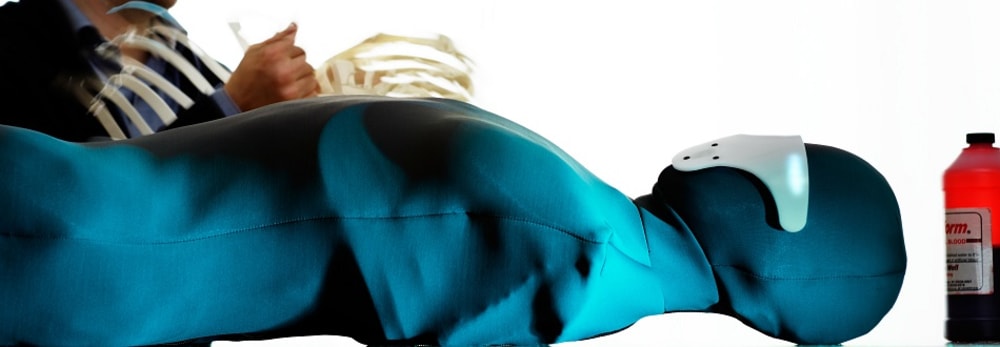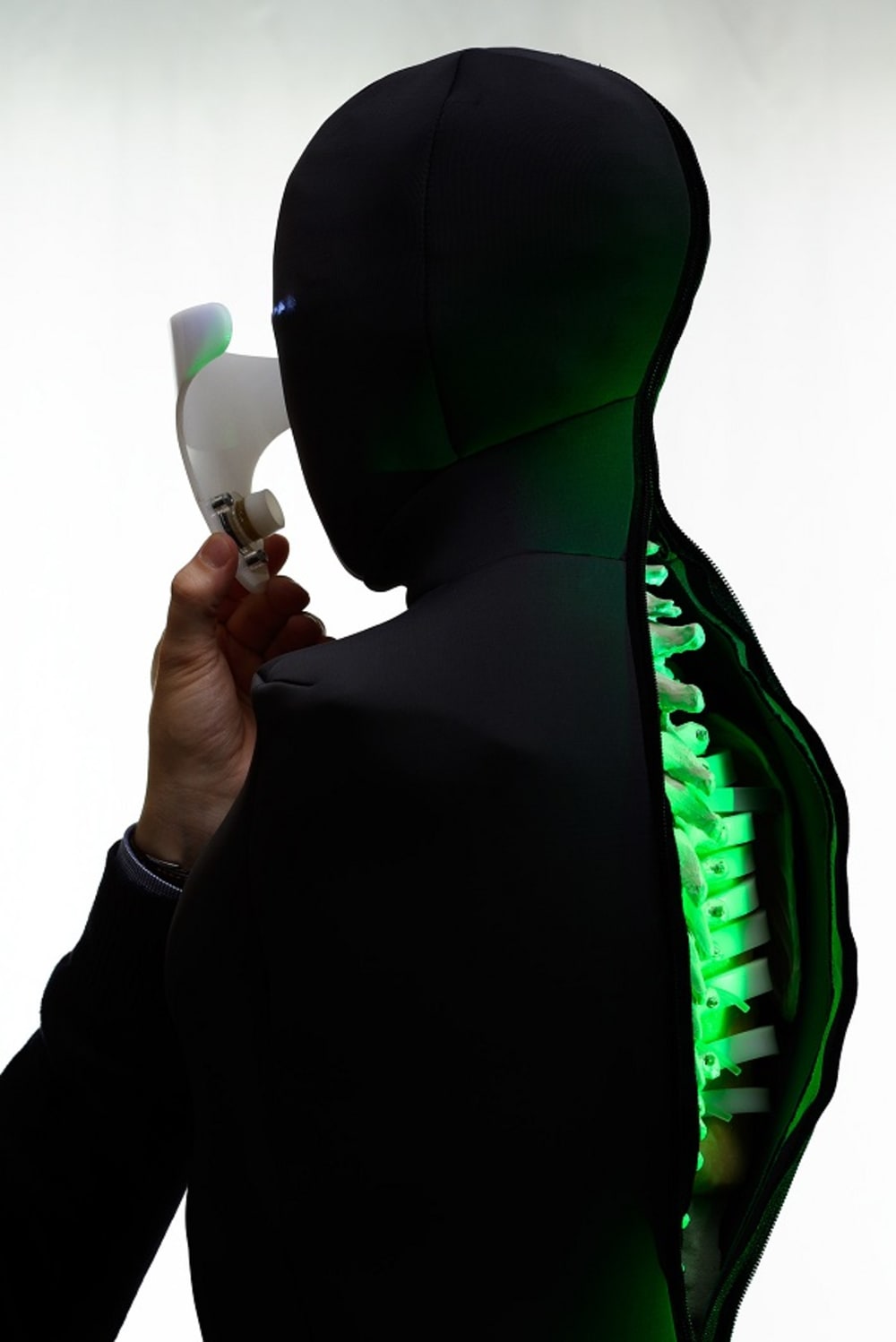Michelle is a novel training dummy with the purpose of improving quality of executed CardioPulmonary Resuscitation (CPR). This to improve survival chances of victims suffering Sudden Cardiac Arrest (SCA), and to lower the amount of brain damage victims suffer during CPR.
CPR is a procedure executed on victims suffering SCA to continue oxygen transportation to the vital organs (mainly the brain) until further actions can be taken to restore spontaneous blood circulation and breathing.
During CPR, blood circulation is restored through the compression of the chest above the heart by pushing blood through the circulatory system. Oxygen residue in the lungs is provided by mouth to mouth breathing, sending oxygenated air into the lungs to be diffused into the blood stream. The combined function of these actions is to keep a usable amount of oxygen remaining in the lungs for the blood to transport, and the blood to be circulated to transport this oxygen to the vital organs.
Next to training how to perform chest compressions and mouth to mouth breathing, training is simultaneously meant to support trainees in experiencing the feeling of the physical actions they perform when executing CPR. These tactile experiences are the chest compressions and lung ventilations and are important to be consistent throughout the CPR procedure to optimize oxygen transport.
The problem is that although current dummies are a physical representation of a real life victim they only share the appearance of being human. Internally even the most advanced types of dummies do not relate to how the human body is constructed, and conclusively can never convey the tactile experience of reality, nor can they provide information on the effectiveness of actions performed during CPR in terms of blood flow (ml/compression) and oxygen- transport and residue (% of O2 remaining, or transported of the lung volume).
The solution Michelle offers is a new training dummy design based on the real human body. With an integrated artificial rib cage, respiratory system (lungs), cardiovascular system (a physical heart circulation system filled with artificial blood), connected to measuring sensors and a real time feedback system, she can provide trainers and trainees with insight in the effects of their actions while training. Also because the design physically behaves like the human body would while compressing the chest and performing mouth to mouth, realistic tactile experience is built up.
By having medical staff train with Michelle in hospitals and medical training centers across the globe, the quality of performed CPR will rise. When they meet the situation in real life, they are prepared both in knowledge on how to perform, as well being able to assess the quality of their actions based on the tactile feedback they receive during the procedure. In turn, this improves survival chances of victims suffering cardiac arrest, and lowers brain damage suffered during cardiac arrest, resulting in better quality of life post cardiac arrest.
Like this entry?
-
About the Entrant
- Name:Mark Thielen
- Type of entry:individual
- Patent status:none








